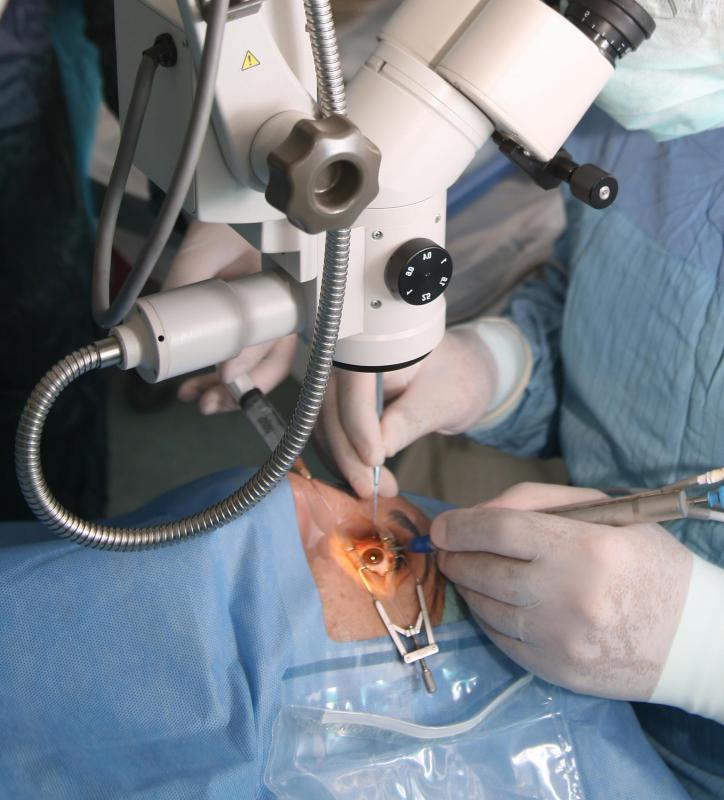At TheHealthBoard, we're committed to delivering accurate, trustworthy information. Our expert-authored content is rigorously fact-checked and sourced from credible authorities. Discover how we uphold the highest standards in providing you with reliable knowledge.
What are the Different Types of Corneal Transplant Surgery?
Corneal transplant surgery, also called keratoplasty, is surgery to replace a diseased or damaged cornea with tissue from the eye of a human cadaver. This is one of the most common types of transplant surgeries, and has the highest success rate. There are different types of corneal transplant surgeries including penetrating keratoplasty, Descemet's stripping endothelial keratoplasty, lamellar keratoplasty, and epikeratophakia.
The cornea is the clear layer of tissue at the front of the eye. Corneal transplant surgery is performed when vision is lost due to cornea damage, disease or injury. Some conditions, such as keratoconus, cause the cornea's curvature to change. Edema, or corneal clouding, is another common problem remedied by corneal transplant surgery.

Penetrating keratoplasty (PK) is the most common type of corneal transplant surgery. A surgeon uses an instrument called a trephine, which is similar to a cookie cutter, to remove a small disk of the patient's cornea. The surgeon then replaces it with a corresponding disk of donated tissue.
The transplanted tissue is held in place with tiny stitches which must remain in place for at least six months. During this period of healing, vision is very poor and the stitches cause some patients discomfort. The stitches are removed over several office visits. Some patients find that their vision never returns to normal because of an irregular astigmatism, which is a warping of the corneal tissue graft.

Most patients that receive transplanted corneal tissue undergo a PK surgery. There are newer techniques, however, that may be effective for some patients. The main difference with newer techniques is that only the inner or the outer layers of the cornea are replaced, rather than all of the layers, as in PK surgery.
Descemet's stripping endothelial keratoplasty (DSEK) is another type of corneal transplant surgery. A surgeon uses specialized instruments to enter the eye through a tiny incision in the cornea. The back section of the cornea, which is called Descemet's membrane, is stripped away and replaced by a piece of healthy graft tissue.

DSEK does not require stitches, and therefore results in far fewer astigmatism problems afterwards. There are fewer follow up exams after the surgery, and patients generally recover vision much faster. Some believe that DSEK transplants results in fewer transplant rejections than with more conventional transplants.
Lamellar keratoplasty (LK) is a type of corneal transplant surgery that involves removing and replacing only the diseased or scarred outer layers of corneal tissue and replacing them with a new "flap" of donor tissue. The procedure is more challenging to perform than a PK surgery, but the risk of tissue rejection and infection are less. If stitches are required, they can usually be removed within a few weeks and visual recovery can be very rapid. LK surgery is only suitable for conditions involving the very outermost layers of the cornea.

Epikeratophakia is a rarely used type of corneal transplant surgery that involves suturing the donor cornea tissue directly onto the surface of the existing cornea. Only the extremely thin cell layer on the outside of the patient's cornea is removed. The procedure can be reversed, and there is no permanent damage to the patient's cornea. This surgery is not widely used because the use of contact lenses can generally achieve the same results.
AS FEATURED ON:
AS FEATURED ON:














Discuss this Article
Post your comments